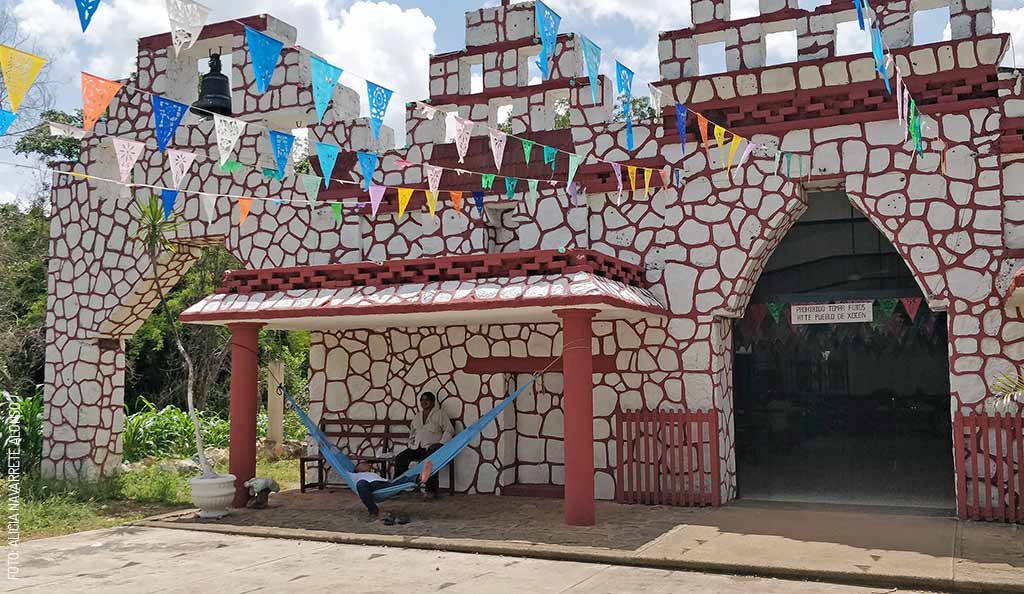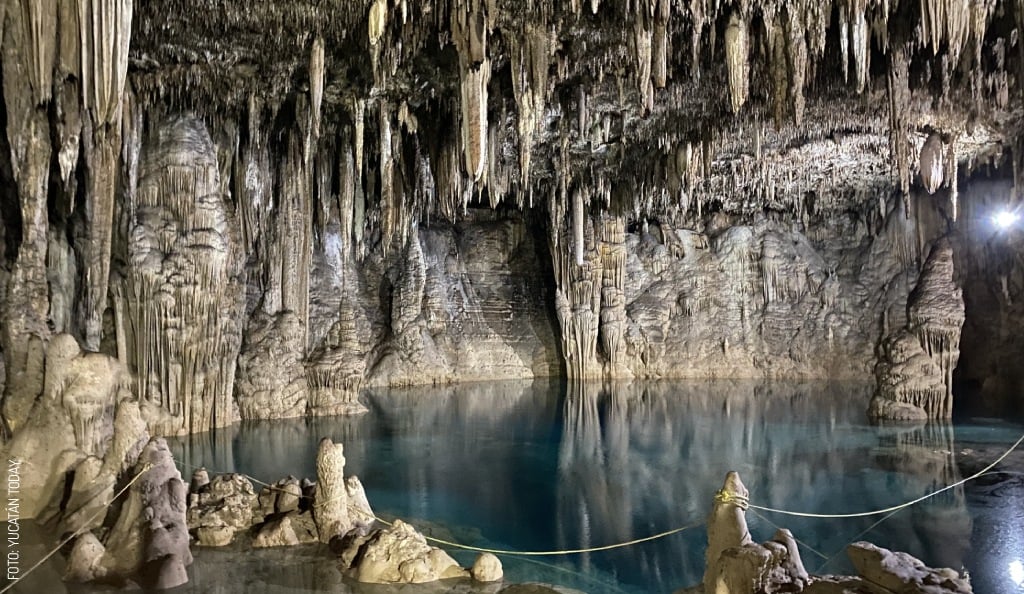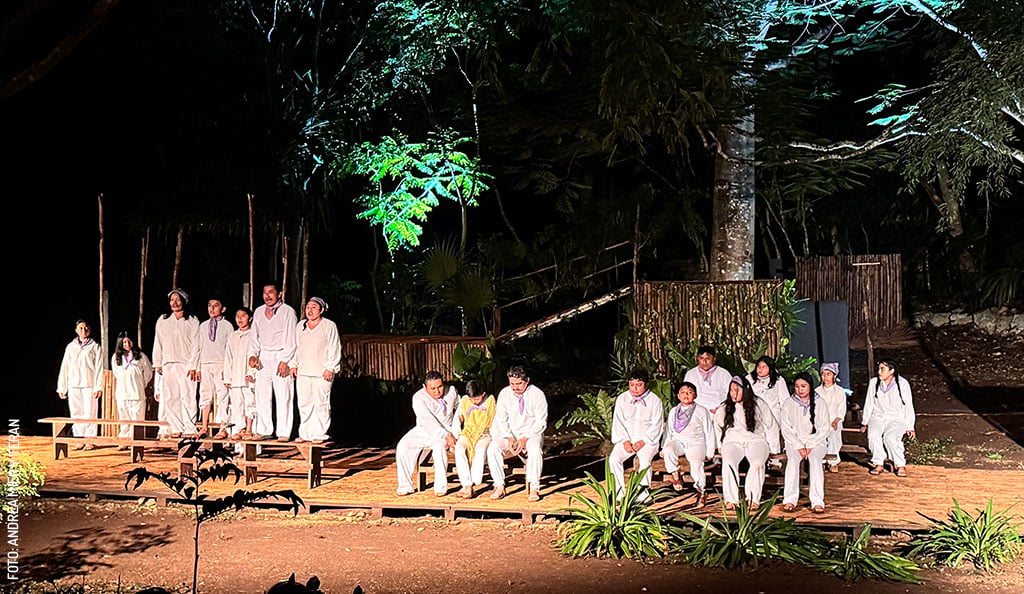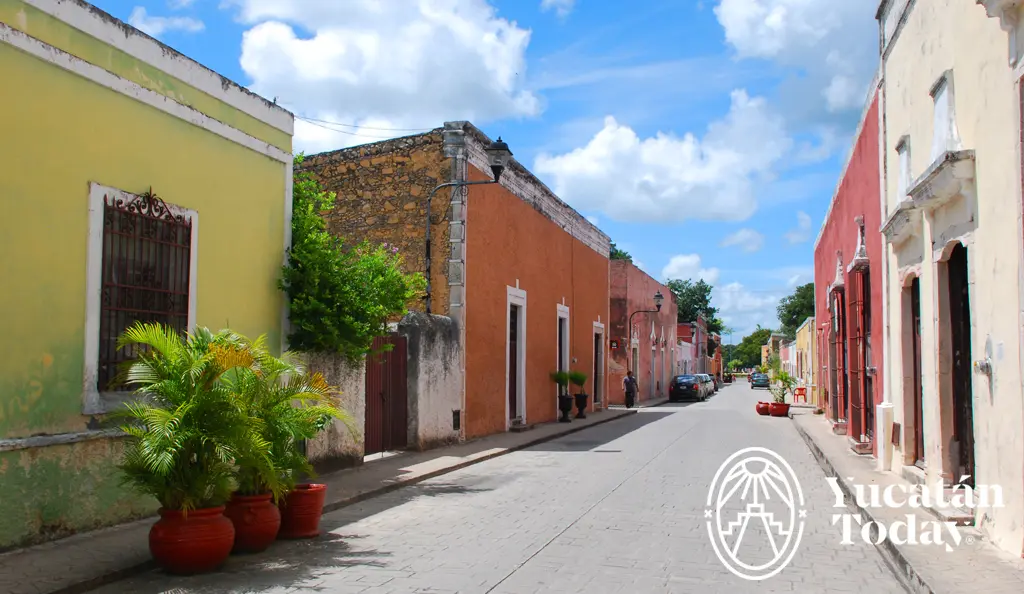
Xocén: A Different Side of Yucatán
Xocén is a village only about 18 minutes away from Valladolid, and yet you could think that it is hundreds of kilometers away. Valladolid stands out because of the well-preserved remains of its colonial life (its churches and neighborhoods, the convent, the Calzada de los Frailes); meanwhile, Xocén is known for being the center of the Maya world. Visiting Xocén is therefore a very different experience. If I had to summarize it in a single idea, I would say that a visit there is far less showy than it is enriching, but it is truly fascinating for people, like me, who are passionate about learning more about the world in which we live.
Our guide (and, if you’d like, yours) for this adventure was Miguel Nahuat. Miguel recently started Xocén Birding Trail, a community ecotourism agency made up of young Maya people who are all tremendously enthusiastic to share a slice of their world. Their specific focus is on Maya nature and culture: depending on your time availability and interests, you can choose between birdwatching, learning to cook (and enjoying, of course) typical dishes, visiting local artisans at their homes/workshops, and visiting sites that are relevant for our region’s first culture. No matter what you choose, Xocén is a great place to learn.
Birdwatching
Wherever in Yucatán you may be, every early evening there’s a concert played out by the many birds hiding in trees (yes, even in Mérida), with over 500 documented species. Xocén is a privileged place to actually see the artists; Miguel teaches you to see and hear what might sometimes feel invisible. He is incredibly skilled at detecting and identifying countless birds along the trail, and enormously patient while helping you see them too. In a matter of minutes, he had already shown us Xcoquitas (clay-colored thrushes), olive-throated parakeets, black catbirds, yuyas (yellow-backed orioles), a roadside hawk, and the cutest blue-black grassquit, which jumped and chirped non-stop for what seemed like hours while we stared in awe. The tour is not just about spotting (and, with the right equipment, photographing) birds, but about learning about them, their habits, and their songs, also incorporating some technology to help you feel like you're getting the most out of it.
Xocén Birding Trail offers both day and night sighting experiences so you can see different species, and maybe catch a glimpse of a sleeping creature here and there. They’re not limited to birdwatching tours in the Xocén area either; they’re all well prepared to guide you wherever in the Peninsula you’d like to explore.
Regional gastronomic workshop
The flagship flavors of Yucatan are traditionally cooked over a three-stone stove or underground, as Olivia tells you in “Culinary Experiences: Three Traditional Kitchens.” In this workshop, Miguel literally opens the doors to his house for you; alongside him, his mother, and his sisters, you can learn to cook a typical dish (Pollo Pibil or Chachacuás, which are tamales from Valladolid) in the underground oven. You can also help them Tortear (make tortillas) and make cocoa tablets. Learning these recipes is great, because their Pollo Pibil is what dreams are made of, and you will for sure eat more tortillas than you think you are capable of. However, the heart of this experience is in the conversation with the family, who welcomes you as if you were related to them. They’ll tell you all kinds of anecdotes, show you their embroidery and how they weave their own hammocks, and will definitely not judge you no matter how misshapen your tortillas are.
Holistic and community tourism
I loved all the experiences that we tried with Xocén Birding Trail, I want to make this very very clear. After going birdwatching, I thought that experience would be hard to top. However, I wasn’t considering one very important detail that I already mentioned above, and which I’m sure you glossed over as well: Xocén is the center of the Maya world. Not the Maya world as an advertising gimmick, associated with sarongs and piña coladas, but the world that is inhabited by the present-day people who happen to be Maya. 
This is no accident. This is the town where the Santa Cruz Tun, or Cruz de Piedra de Xocén, is located, a pilgrimage center for believers from different parts of the Peninsula. It is one of the clearest examples of the combination of the religious beliefs the Spaniards brought with them and those of the Maya, which they had to merge and adapt. The Cross itself is not impressive; it doesn’t seem to be carved in any way, nor is it particularly large. It is, exactly as described, a cross made of stone. At first glance, perhaps the only thing that might catch your eye is the fact that it is "dressed" in an outfit made by one of its faithful. The temple built around it is also quite modest (perhaps because there was a fire there recently), but it is full of life, not only because of the offerings, decorations, and “promises” of its parishioners, but also because always, no matter what time it is, you’ll find those same parishioners there by the dozens: praying, singing, sharing their food with everyone present, or simply praying silently.
The devotion to the Holy Stone Cross is one of the most authentic practices that I have ever witnessed. Now that all things Maya are perceived as cool and trendy, many of us Yucatecos have become accustomed to coming across “shamans”' and dancers dressed with literal bells and whistles, extensive body paint, extravagant headdresses with colored feathers, and the occasional touch of polyester animal print. These are art forms; representations, perhaps, of ancient practices, which are wonderful performances, great for taking photos that look great on Instagram. However, the real rituals are carried out, in plastic sandals, by men with rolled-up long-sleeved shirts and women in Hipiles. In the case of the adoration of the Santa Cruz Tun, everyone is welcome, but taking photos is not allowed. If you come to participate, either actively or as an observer, you can do so, but with respect, because this is not a tourist attraction, but a religious celebration.
Miguel prepares you for what you will see; he tells you the most respectful way to come in and participate, and helps you really understand what's going on and what it means. Why are there so many artifacts and so much food? Why does this not look like a Catholic celebration (it is, although there will be Catholics who think otherwise)? Why is this church full, while the Xocén parish is empty? Whatever question you can think of, he will be able to answer.
This is just a glimpse of how much you can do in Xocén; I didn't even get to tell you about the Indigenous Theater or the visits to the artisan workshops. I hope, however, that I have told you enough to inspire you to go and let yourself be led into a personalized experience for you and your fellow travelers. No matter what you choose, I think you will discover that Xocén is indeed a different experience, and that the photos you take (and I'm sure you will take photos) you’ll take for you, because you’ll want to treasure the memory of everything you saw, lived, and learned. Isn't that the best kind of experience?
Xocén Birding Trail Tel. 985 211 7068 IG: xocenbirdingtrail FB: Xocen Birding Trail

Author: Alicia Navarrete Alonso
As a kid I heard that there's more to see than can ever be seen and more to do than can ever be done, so I set out to try. I'm passionate about knowledge and I love to share whatever my own is.
Receive the latest articles and much more from the best of Yucatán in your email!
Related articles

Treasure Along the Way: Cenotes Choj Ha and Pueblo Fantasma
Discover the hidden treasures of Cenotes Choj Ha and Pueblo Fantasma in Yucatán, Mexico. Dive into pristine natural cenotes and enjoy unique...
"Juan Balam": An Immersive Night in the Heart of the Maya World
Juan Balam: Bilingual Theater (Maya-Spanish) in the jungle of Xocén, Valladolid. Immersive reflection on human nature and exclusion.




